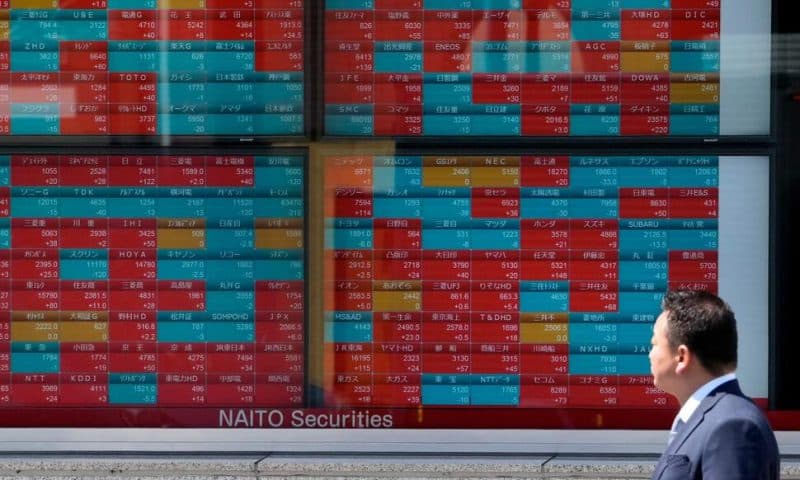Yields finished higher in a shortened trading day for the U.S. bond market following a highly anticipated report on the job market
NEW YORK — Yields rose in the U.S. bond market Friday following a highly anticipated report on the U.S. job market.
The U.S. stock market was closed in observance of Good Friday, as were many markets across Europe. That left the U.S. bond market as one of the few open to react to the latest jobs update, which showed hiring lost a bit more momentum than expected last month but largely remained resilient.
The data was so anticipated because it could offer a big clue for the Federal Reserve, which faces a tough decision on interest rates that will affect the entire economy. Should it keep raising rates in order to drive down inflation that’s still high? Or should it hold off given signs of a slowing economy and stress in the banking system caused by the past year’s barrage of rate hikes?
The immediate reaction from the bond market Friday seemed to lean toward another hike. Not only did yields rise for Treasurys, so did bets for the Fed to raise rates by another quarter of a percentage point in May at its next meeting.
The yield on the 10-year Treasury climbed to 3.40% from 3.30% late Thursday, as of noon Eastern time, when bond trading was recommended to end. The two-year yield, which tends to move more on expectations for the Fed, rose to 3.96% from 3.83%.
Traders also are betting on a roughly two-in-three probability that the Fed will raise rates in May, according to data from CME Group. A day earlier, they saw roughly a coin flip’s chance that the Fed would make no move on rates, something that hasn’t happened in more than a year.
Friday’s jobs report showed that employers added 236,000 jobs last month, a slowdown from February’s 326,000 and slightly below economists’ expectations. Wages, meanwhile, grew 0.3% from February to match expectations. But year-over-year wage gains slowed to 4.2% from 4.6%.
A cooler job market is exactly what the Fed is trying to achieve. Raising rates is one of the Fed’s most effective ways to undercut inflation, but it’s a notoriously blunt tool that works only by slowing the entire economy. That raises the risk of a recession and hurts prices for stocks, bonds and other investments.
“The labor market is getting winded,” said Brian Jacobsen, senior investment strategist at Allspring Global Investments. “Payroll gains are still high, but the aggregate hours worked have fallen two months in a row. The payroll gains are not as broad-based as they used to be and hours are getting cut.”
Jacobsen said he doesn’t see reason for the Fed to hike rates based on the jobs report alone, and he said next week’s update on inflation may be more important. The government will offer the latest monthly update on prices consumers are paying on Wednesday. Economists expect it to show another slowdown, but for inflation to remain well above the Fed’s target.
Friday’s jobs report followed a string of reports on the economy this week that showed flagging momentum. A measure of health for the U.S. manufacturing industry contracted by its worst level since the summer of 2020, when the pandemic was wrecking the global economy. A separate measure of the U.S. services industries was weaker than expected, while employers posted fewer job openings across the country.
Many economists see a recession later this year as likely. But some say a narrow possibility still exists where the Fed could raise rates just enough to get inflation fully under control without causing a severe recession.
Also complicating things for the Fed is the widespread belief in the bond market that the central bank will have to cut interest rates later this year in order to prop up the economy.
Such cuts can act like steroids for financial markets and relax conditions for the economy, but they likewise would give inflation more oxygen. The Fed has so far consistently said it sees no rate cuts happening this year. It’s often cited the dangers of letting up on the fight against inflation too early.
“Below-trend job growth and a modest rise in the unemployment rate is what the Fed is aiming for, but the weakening labor market supports the recession narrative and reinforce markets expectations of rate cuts,” said EY Chief Economist Gregory Daco.
Before the release of the U.S. jobs report, stocks rose across much of Asia.
Stocks in Shanghai gained 0.5%, Tokyo’s Nikkei 225 advanced 0.2% and the Kospi in Seoul rose 1.3%. Bangkok, Taiwan and Malaysia also gained.

